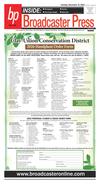112216_YKBP_A2.pdf











2 Broadcaster Press
November 22, 2016 www.broadcasteronline.com
Wildlife and the Bottom Line
BROOKINGS, S.D. - In tough market conditions, it can be
tempting for crop and livestock producers to try to squeeze
just a bit more production out of the land.
However, according to Jimmy Doyle, SDSU Extension
Natural Resource Management Field Specialist, these incremental increases in production often come at the cost of
increasingly expensive inputs and may jeopardize the longterm health of your natural resources.
"I encourage agriculture producers to use the current
conditions as an opportunity to prioritize wildlife and habitat
conservation and be creative about how these often untapped resources can be used to provide additional income
during the lean years," suggested Doyle.
Hunting Ventures & Additional Income
Doyle said hunting is an obvious starting point when
considering how to earn additional income from natural resources. Beyond that initial point, he said it quickly becomes
complicated.
"Hunting ventures, like any other enterprise, exist on a
wide spectrum of inputs and profitability," Doyle explained.
"The potential for profit varies widely with how much labor,
infrastructure and marketing effort you are willing to commit."
Some of the options Doyle outlined below (generally in
order of low to high input/income) include:
•Public access leases - administered through programs
such as Game, Fish and Parks' Walk-In Area program. These
require very little input on the part of the landowner.
•Private leases - may lease hunting rights to individuals,
groups of individuals, or to outfitters to guide hunters.
•Self-guided/semi-guided hunts - may offer services such
as maps and tour of the property, hunting locations, lodging
and meals.
•Fully guided hunts - offers an expanded level of service,
room and board may also be offered. This requires the highest level of investment in terms of infrastructure, labor, and
marketing.
"As with any other enterprise, producers should take
stock of their current resources to identify potential
strengths and weaknesses for a hunting enterprise," said
Doyle.
He begins with a short list of questions:
1.What wildlife species are present?
2.What are the limiting resources for your focal species of
wildlife, and how will you address those?
3.How would a hunting operation fit in with your current
production cycle and labor demands?
4. Do you have a spare house on the property that could
be used for lodging, or do you need to build a million-dollar
lodge?
5.Will this be a side enterprise or do you expect to turn
this into a focal point of your operation?
"Addressing these types of questions can help you decide
on the best way to proceed with a wildlife based enterprise
on your farm or ranch," he said.
Like anything else in agriculture, Doyle said producers aren't likely to find a quick buck in hunting. "But it can
help provide additional income and a buffer against volatile
commodity markets," he said. "This may require a shift in
management, but the end result may be increased wildlife
populations for South Dakotans, productive working lands,
and economically viable farms and ranches."
For more information on how conservation can benefit
your bottom line, contact Doyle by email or contact your
local South Dakota Game, Fish and Parks office, the U.S. Fish
and Wildlife Service or other conservation organizations.
- See more at: http://igrow.org/news/wildlife-and-the-bottom-line/#sthash.KxCRSIu8.dpuf
Wintering Calves Headed to Spring Pastures
BROOKINGS, S.D. - After weaning, not every calf should
be managed the same. "Putting the right cattle into the
right program greatly increases the chances of success,"
said Warren Rusche, SDSU Extension Beef Feedlot Management Associate. "Replacement heifers and calves that will
spend next summer grazing as yearlings will be managed
quite differently than calves going on either a fast-track
backgrounding or calf-fed finishing program." For replacement heifers and calves destined to spend summer 2017
grazing, Rusche said maximum performance is not the goal,
but instead a balance between reducing overall wintering
costs without compromising future productivity. "Getting calves too fleshy during the winter results in reduced
summer gains in yearlings and negative effects on lifetime
productivity in replacement heifers," he explained. Rusche
added that cattle producers need to be careful not to
reduce inputs too much, because this can result in lower
pregnancy rates in replacement heifers and reduced marbling potential in growing cattle. For best results, Rusche
urges cattle producers to aim for performance targets
between 1.5 and 2 pounds per day. "This should avoid
negative outcomes in most cases," he said. The right feed-
ing program Frame size can help cattle producers decide
what type of feeding program they should pursue. A longyearling program, Rusche explained allows the smallerframed, lighter calves time to add frame before going on
a finishing diet, resulting in increased hot carcass weights
without negatively affecting marbling. On the other hand,
feeding larger framed, higher performing cattle diets that
restrict their growth potential will depress marbling. "A
downside of feeding calves to gain at a relatively slow average daily gain (ADG) is that the total cost of gain-per-pound
will almost always be more expensive compared to programs targeting greater performance," Rusche said. Feed
costs to meet the calf's maintenance requirements as well
as all fixed yardage expenses have to be borne by fewer
pounds of gain. "These programs should focus on reducing
costs-per-day for the winter with the objective of achieving
cheaper gains during the grazing period," he said. "Owning
the calves all the way to the end of the grazing period maximizes the opportunities to recapture any performance lost
during the winter." Winter grazing Utilizing winter grazing
resources when feasible is one strategy to reduce the total
costs of a wintering program. "Research from SDSU has
L’Nora Bylander celebrates her
this month.
Or join us for cake and coffee
at the Centerville Care Center
3.5” x 2.5” | Maximum Font Size: 30 pt
at 2 p.m., Saturday, Nov. 26
WJ Ranch 15th Annual
Cowboy Christmas
(7 mi. south of Yankton, SD just off Hwy. 81)
ids!
Hey Katurday
S
e
See M1-3pm
Sat. & Sun., Nov. 26 & 27
10:00 a.m.-5:00 p.m. Both Days
•Horse Rides Begin at 1pm Daily
•Trick Roping Shows
•Crafts For Kids
•Model T/Hayrack Rides
•Family Activities
•Refreshments
Clothing, Primitives, Jewelry, Western Decor, Florals, Metal,
Wood, Fabric, Christmas Decor, Food Gifts & Much More!
NO ADMISSION CHARGE! See www.schiferlswjranch.com
Stories you missed this week because
you’re not a Plain Talk subscriber
Full editorial and photo coverage of the Vermillion
community’s Veterans Day ceremony, held Nov. 11 in the
Vermillion High School gymnasium.
Have 403(b)
Financial
Curt Robinson Advisor
.
Financial 23 Market Street
Advisor
Patrick M Higgins
Financial Advisor
605-624-2028
www.edwardjones.com
23 Market Street
Vermillion, SD 57069
605-624-2028
www.edwardjones.com
Member SIPC
THANK YOU!
It has been an honor serving as
Clay County’s State’s Attorney.
Thank you for your
support and
kind words.
Congratulations and
best wishes to Alexis.
~ Teddi Gertsma
Did you know that Vermillion’s very first fire truck now has a
new home? You would if you read the Nov. 18 issue of the
Plain Talk.
What is the most rewarding part of being a children’s book
author? Read all about it in the Nov. 18 Plain Talk.
And if you want to see:
Coverage of the Vermillion High School 13th annual Fall
Show, scheduled Nov. 18 and 19. During Saturday night’s
performance, the VHS auditorium will be dedicated as the
Thomas H. Craig Center for Performing Arts.
A story about a unique idea being pursued by the Vermillion
Fire/EMS Department to save money while updating the
department’s ambulance fleet.
Complete coverage of the Nov. 21 Vermillion City Council
meeting. Read the Plain Talk to keep informed about local
government issues.
Pick up this Friday’s Plain Talk!
Local news since 1884!
Here for you yesterday, today and tomorrow.
201 W. Cherry, Vermillion, SD 57069
605-624-2695
97
Invest in your
questions? Let’s talk.
retirement.
Curt Robinson
Vermillion, SD 57069
23 Market Street
605-624-2028
Vermillion, SD 57069
www.edwardjones.com
Paid for by Teddi Gertsma
Thanksgiving….
is a perfect time to show
love and gratitude to
family and friends, old & new….
Happy Thanksgiving
Jensen
Auto Body
301 W. Main, Vermillion • 605-624-2481
3
YEARS OF
DELIVERING
AS PROMISED.
- See more at: http://igrow.org/news/wintering-calvesheaded-to-spring-pastures/#sthash.mWVnTouQ.dpuf
Cottonwood Fire,
a Reminder about
Fire Safety
97th birthday
Send a card to her at
500 Vermillion St.,
Centerville, SD 57014
demonstrated that grazing replacement heifers offers clear
benefits in lifetime cow productivity," Rusche said. If grazing resources are available and the weather permits, grazing lower-quality roughage combined with supplemental
protein can reduce total cost of production. A downside of
these growing programs, which Rusche pointed out, is that
producers can be exposed to more risk because of a longer
ownership period. "Owning cattle longer means more time
to see falling cattle price, and more opportunities for cattle to get sick or die," he said. "Sound preventative health
programs and risk management plans are vitally important
to avoid dramatic impacts on a ranch's financial position."
Changing weather conditions can also wreak havoc on marketing or production plans. Limited grass availability and
drought conditions can drastically affect demand for grass
cattle and replacement heifers. "Having a "Plan B" in place
can be very important to avoid being forced to dump cattle
in an unfavorable market environment," Rusche said.
BROOKINGS, S.D. - Although most people associate
wildfire season with the hot, dry peak of summer, the recent
Cottonwood fire provides a strong reminder of the importance of fire safety throughout the year.
The Cottonwood fire consumed over 40,000 acres of
grassland, causing significant damage to livestock, structures, and other property in the process.
"The moisture and cooler temperatures of fall make it
easy to become lax about fire danger, however, conditions
can still lead to easy ignition and rapid growth of wildfires,"
said Jimmy Doyle, SDSU Extension Natural Resource Management Field Specialist.
"Grass and other vegetation which accumulate over the
growing season can provide a significant fuel source for fall
fires as it dries out and enters dormancy."
Below, Doyle outlines precautions hunters, agriculture
producers, landowners and the general public should take
this time of year to prevent fire and protect their assets in
case of a fire.
"Prescribed fire can bring many benefits to the grassland
ecosystem, but unplanned and uncontrolled wildfires can
have devastating impacts to local residents," Doyle said.
"Producers, hunters and anyone else who is active outdoors
can take some simple steps to minimize the danger of starting a wildfire and do their part to ensure the safety of South
Dakota's natural resources and the people who depend on
them while working or recreating outdoors this fall."
Outdoor Activity Safety
Increased activity, such as fall roundup and hunting, on
pastures and rangeland can also lead to increased chances
of sparking a fire. Some important points to keep in mind
include:
•Avoid parking vehicles, ATVs, or UTVs in tall grass;
•Watch for accumulation of tumbleweeds or other dry
vegetation under vehicles and equipment;
•Keep a fire extinguisher in vehicles and equipment;
•Do not discard cigarette butts outdoors;
•Ensure all campfires are completely extinguished;
•Do not burn trash or debris on warm, windy days; and
•Use a trash incinerator with a spark arrestor.
Defensible Space
Those who live in wildfire prone areas are encouraged to
follow the principles of "defensible space."
"Defensible space relates to fire danger mitigation around
homes and other structures through landscaping and other
tools," explained Doyle.
He further explained that defensible space is based on
managing fire risks in different zones around homes or other
vulnerable areas.
Some concepts of defensible space that might fit in the
context of a rural South Dakota home include:
•Maintain space between trees or shrubs and houses or
other buildings;
•Keep gutters and roofs clean and free of flammable
debris;
•Landscape with fire-resistant plants;
•Keep grass mowed around structures, haystacks, and
machinery; and
•Avoid storing hay, fuel, or other combustible materials
near buildings.
- See more at: http://igrow.org/news/cottonwood-fire-areminder-about-fire-safety/#sthash.zHv99rOv.dpuf
• Full-Color Print Services
• Copy & Document Services
• Special Event Printing
• Bulk Mailing Services
• Booklets / Manuals
• CAD Printouts & Banners
PRESSING
MATTERS
Downtown Vermillion
Call 605-624-4132
Click sales@pressingmatters.biz
www.pressingmatters.biz
Get your ad in the..
Classifieds
Today!
CALL: 624-4429 or FAX: 624-2696
EMAIL: classifieds@plaintalk.net
ONLINE: BroadcasterOnline.com
DROP BY: 201 W. Cherry, Vermillion
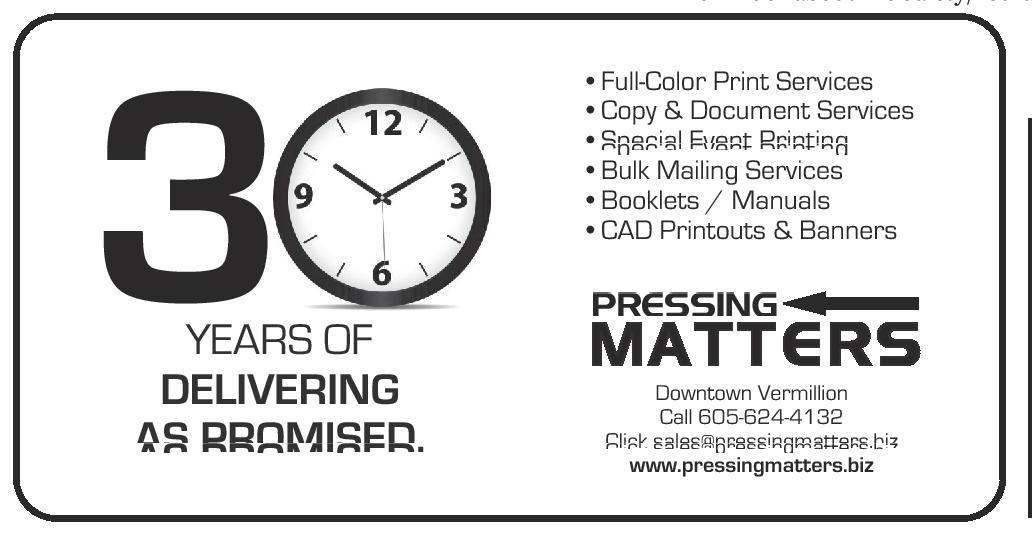

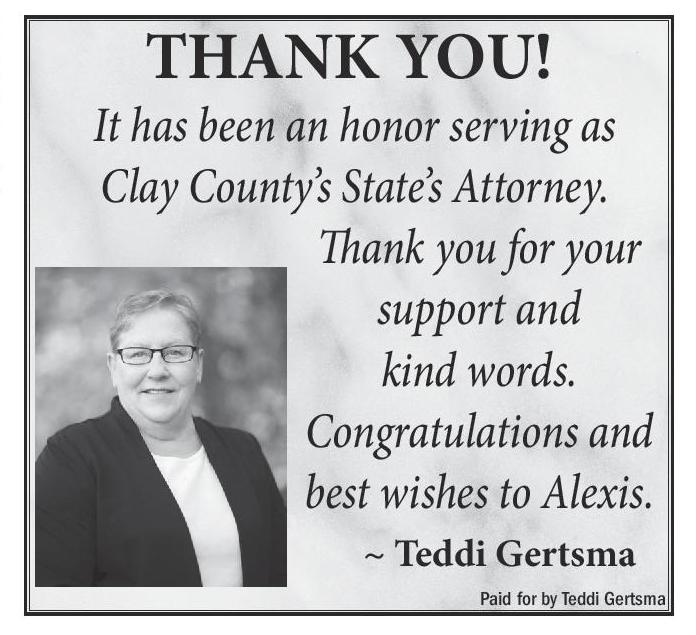

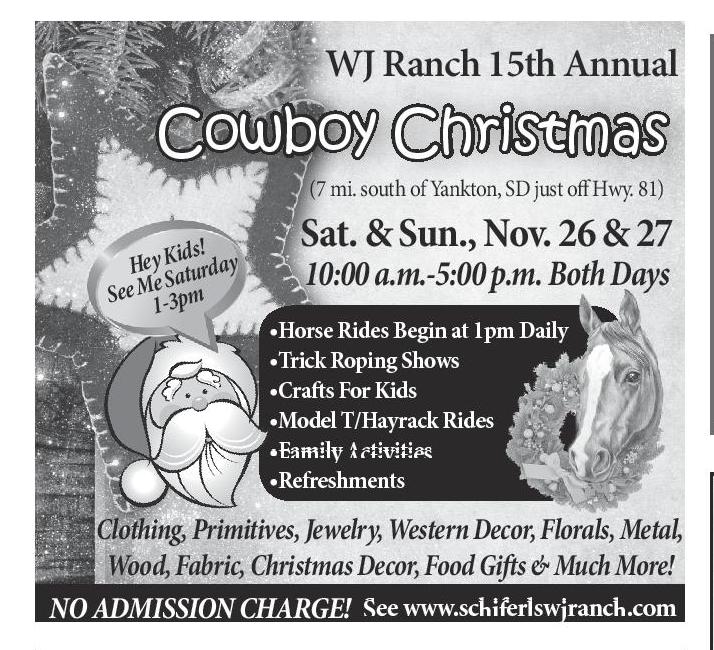


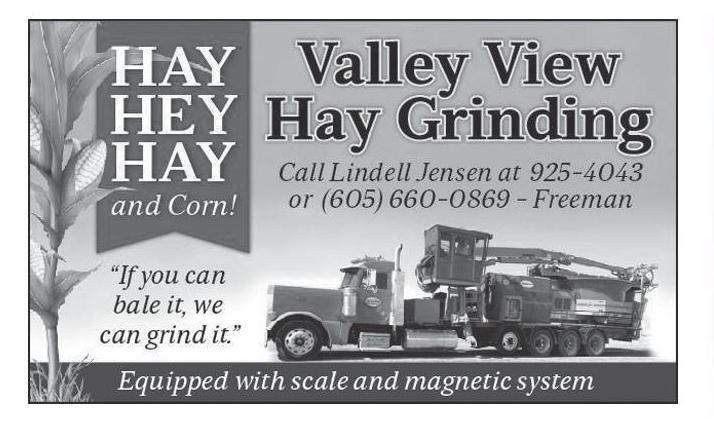
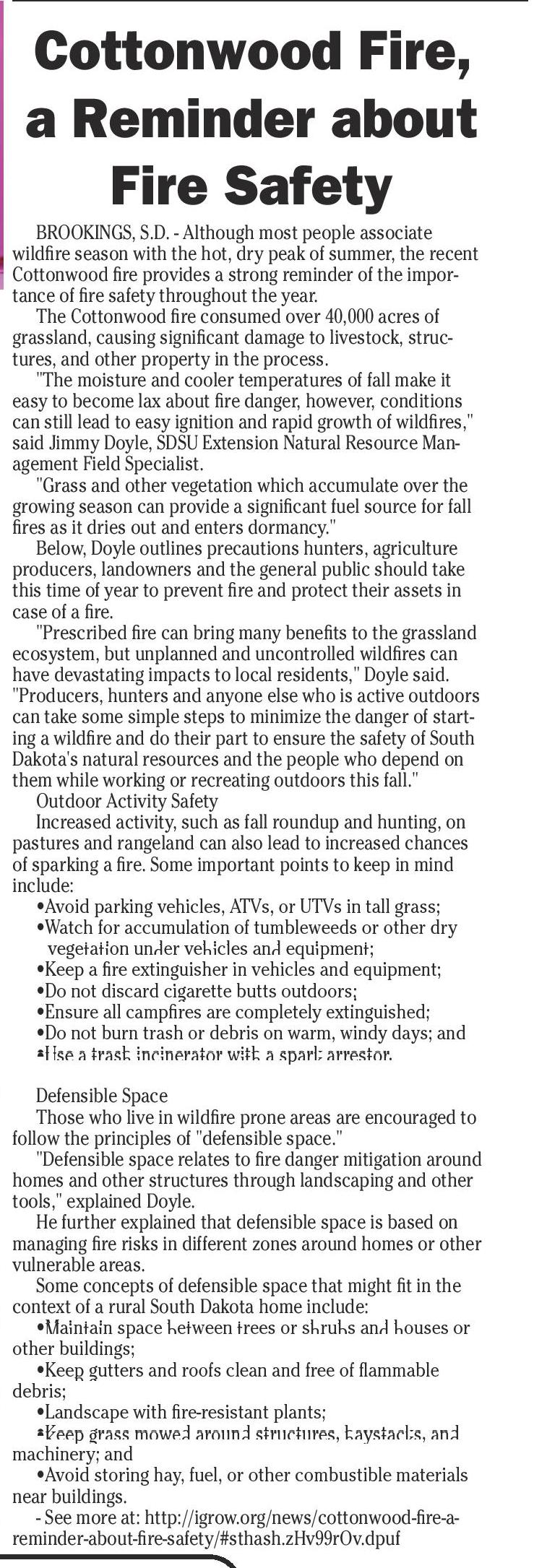
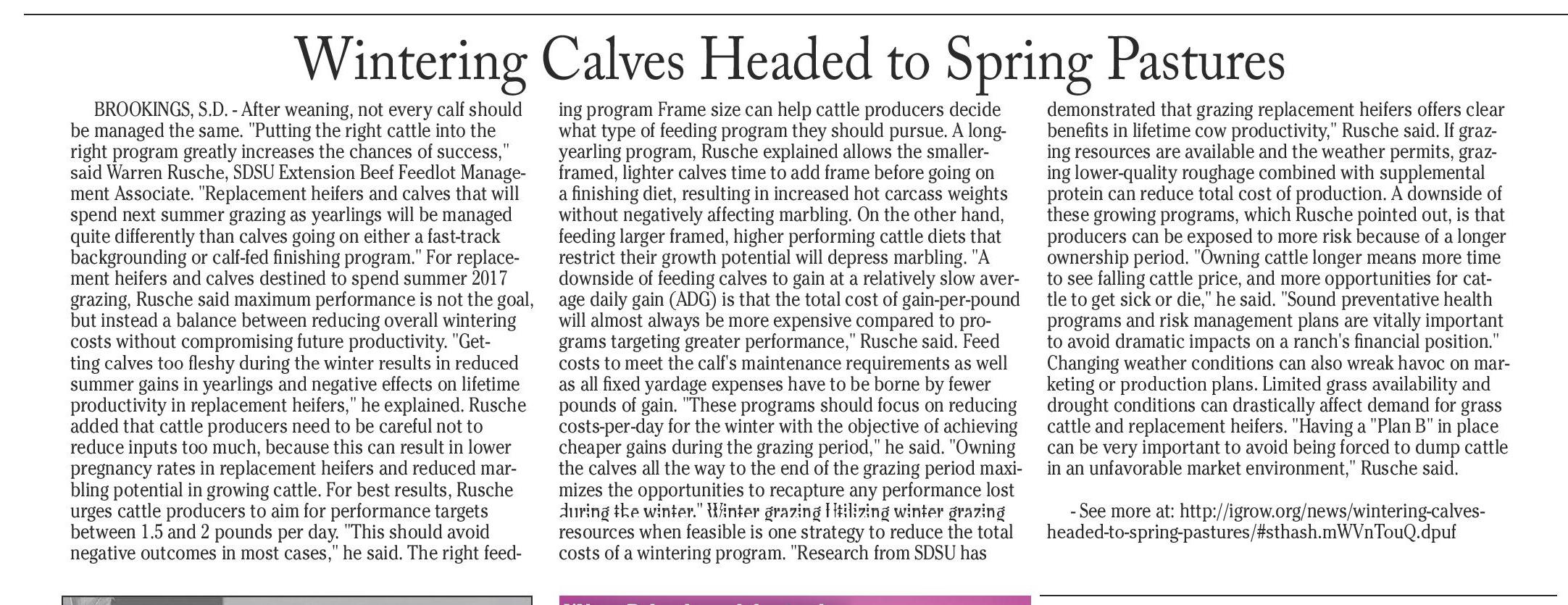
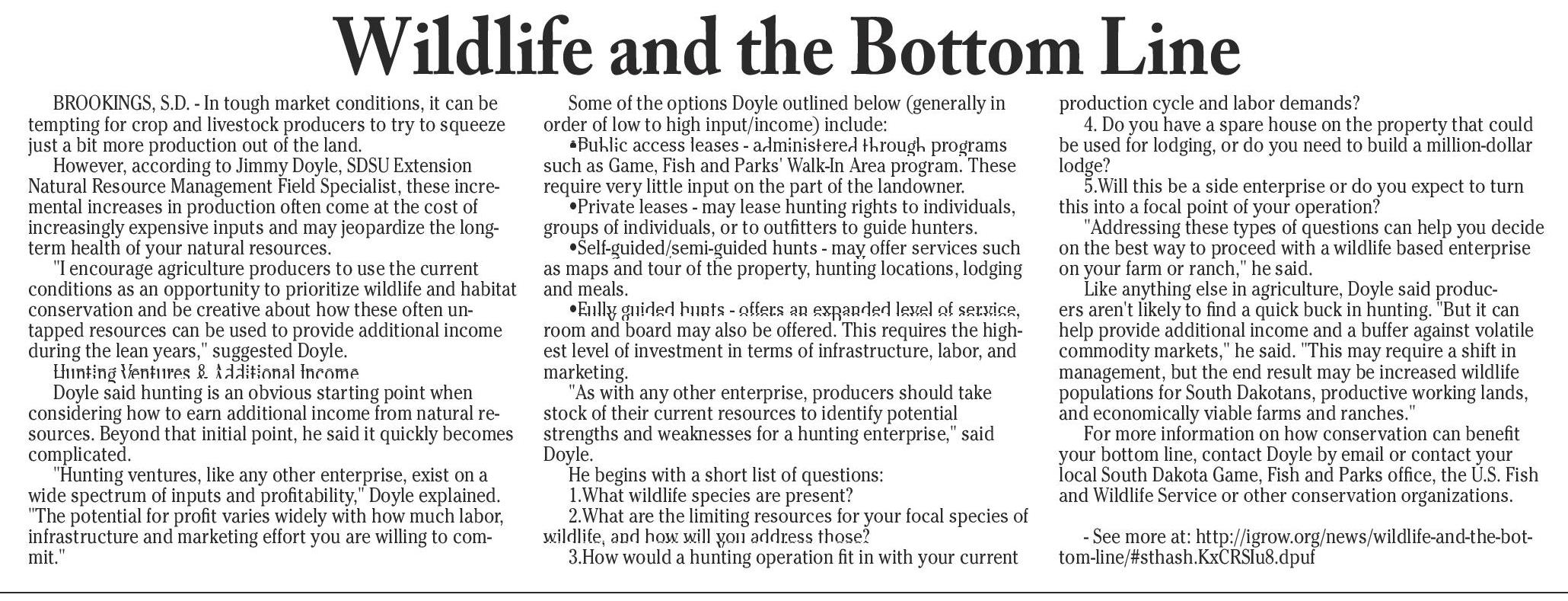


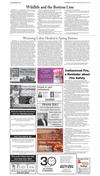
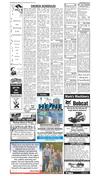
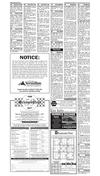
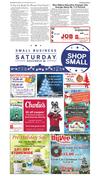

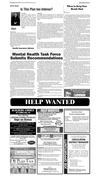

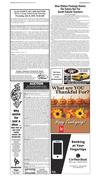

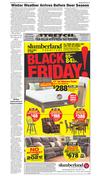
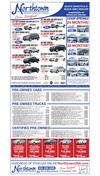
 Previous Page
Previous Page






